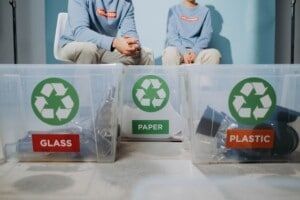How To Be A More Eco-Conscious Entrepreneur

Business owners play a critical role in the worldwide effort to cut emissions and avoid additional environmental harm. Not only can they do a lot within their own businesses, but they can be role models for others, so the cycle continues – and that has to be a positive thing. Here are some recommendations to help you become a more eco-conscious entrepreneur if you want to adopt greener methods of working.
Recycling
Recycling is an efficient method of decreasing trash and guaranteeing that things with useful life left in them can be used rather than ending up in a landfill. If you own a company , you can take steps to reduce the amount of garbage you generate while increasing the amount of waste you recycle or reuse. Replace paper records and papers with technology, and collect paper, cardboard, glass, metal, and plastic trash for recycling. Make it simple for your staff and customers to recycle items and packaging by providing clear rules. If your company creates garbage that isn’t commonly recyclable, search out organizations or programs that might help.
Materials
On a daily basis, business owners purchase and employ a wide range of materials. If you want to become greener, look at the materials and chemicals you use to make goods or deliver services and see if there are any eco-friendly alternatives. If you need to find a new cosmetic ingredients supplier because your old one wasn’t eco-friendly enough, you’ll need to make that change.
Look for sustainable materials, materials manufactured in a manner that decreases emissions, or goods that create less emissions because they don’t need treatment or curing. It’s also a good idea to audit orders to see if there are any opportunities to decrease waste and recycle any products that you don’t need or utilize.
Energy Consumption
Reducing energy use has various advantages for both company owners and the environment. Lowering your usage will save you money while also benefiting the planet. Cutting expenses enables entrepreneurs to dedicate funding to initiatives that promote growth and optimize revenues.
There are several methods for lowering energy expenditures, such as insulating commercial buildings, using a thermostat to adjust the temperature, installing smart meters to measure use, and investing in smart technologies.
Modern technology is intended to increase efficiency and performance while simultaneously saving money. Consider alternatives such as energy-saving lightbulbs and motion sensor lights. You could also switch to renewable energy sources and urge your staff to participate by turning off lights when they leave rooms and unplugging equipment rather than leaving them on standby. Setting a good example at work can encourage customers and workers to follow suit at home.
Businesses will play a critical role in safeguarding the environment and lowering carbon emissions in the future. There are various actions you can take if you want to go green and do more to reduce your carbon footprint and encourage consumers and staff to be more eco-conscious. Encourage recycling and reusing, acquire items that are sustainable or ecologically friendly, and limit your energy use.


